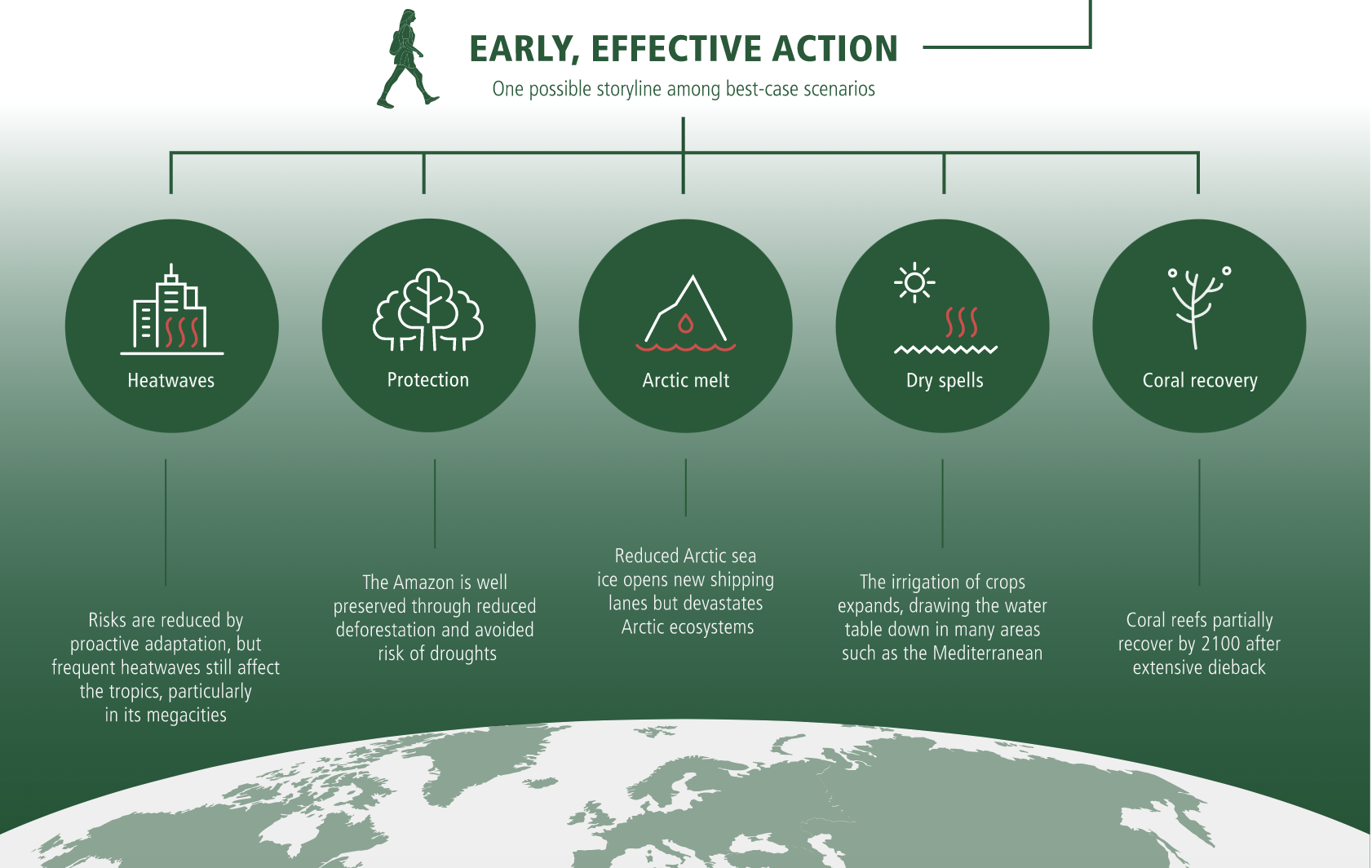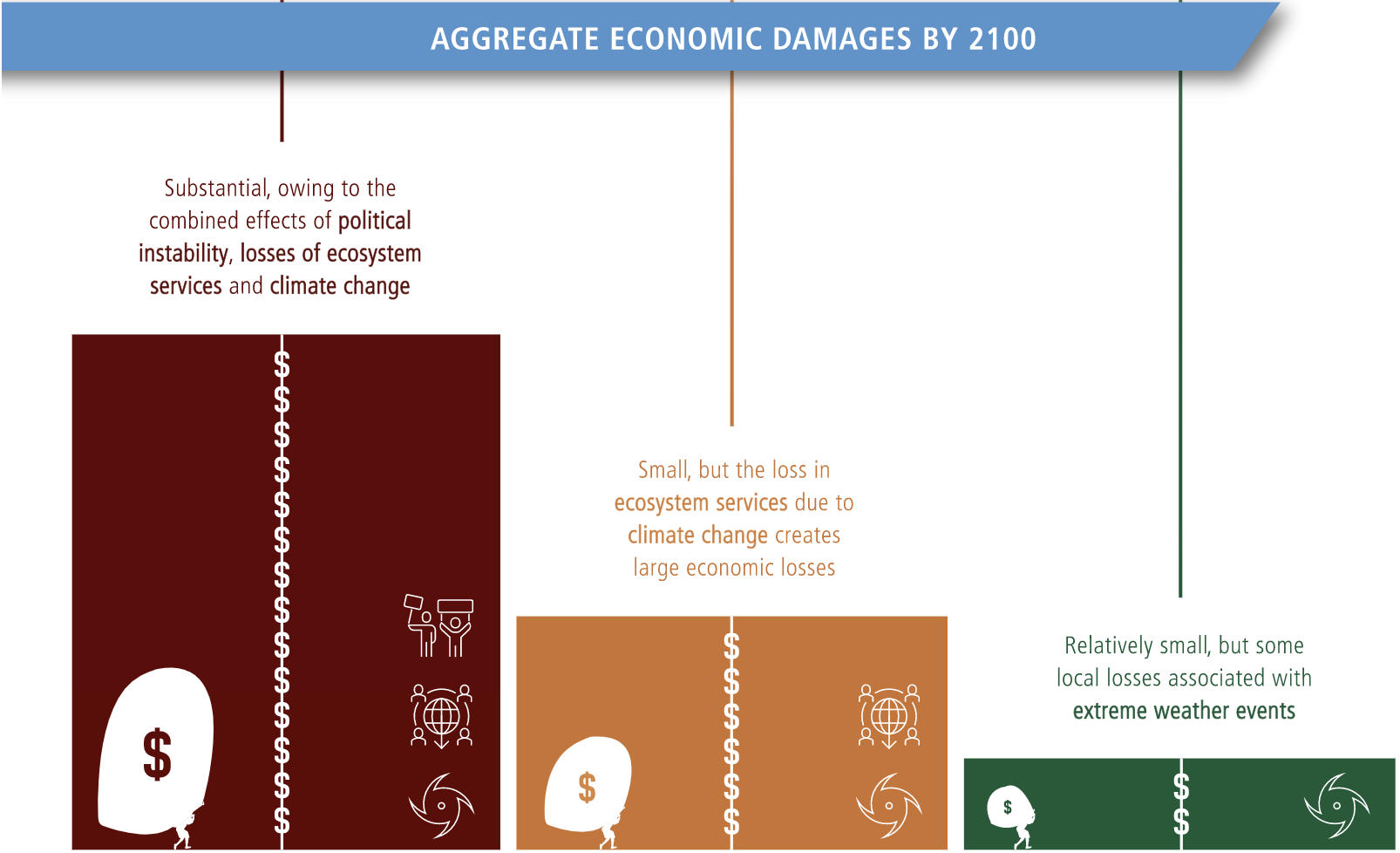I was definitely left in a state of despair after watching the new documentary David Attenborough:A Life On Planet Earth which contained a part that showed the future destruction and suffering for the world if we don't change things, for those of you who have seen the documentary, you'll know which part I'm talking about. It's like a montage sequence in a film, except it's not looking at training for a boxing match, rather it's fragments of a future where we did nothing to act on the climate crisis.
Cut to today where I read a new IPCC report called Worlds Apart: A Story Of Three Possible Warmer Worlds, which explores three possible future scenarios depending on the level of action from the world. They explore "Late, Uncoordinated Action", "Delayed Decisive Action" and "Early, Effective Action". The report doesn't negate that some destruction will happen and is already happening, but it does explore a possible best case scenario where we can limit the damage and stop some altogether so we can still inhabit the world in 2100.
Let's take a look at the best case scenario:

They explore the earth's atmosphere by comparing it to the bathtub shown above. The big tap represents human-made CO2 emissions, which either needs "turning off" or needs to be matched by an equal outflow (shown on the bottom right-hand side of the tub).
How do we get there? Action.
The report explains that if there is strong climate action in all major world regions at the national, state and city levels, if carbon capture and storage plants are installed and tested, if transport is decarbonised, if there is coordinated agriculture that leaves natural ecosystems intact and relatively unharmed, if food waste is slashed and the world moves toward more plant-based diets and if bioenergy sourced from waste, algae and kelp farms are used to minimise pressure on food production and biodiversity, then we could have a shot at pulling-off the path of minimal climate destruction.

The image above explores the future world if all the previously mentioned measures are taken. There will still be irreparable damage like heatwaves and droughts, arctic ice will melt and some biodiversity will be lost (however, it may be able to recover in time). But overall the damage is reduced and in some cases completely mitigated. This report explores three possible scenarios, but the impacts of climate change are already here. We can see this as island nations struggle with sea level rise and extreme weather, as bushfires get stronger and more devastating than ever before and heatwaves intensify. So we can't expect a future world where no environmental harm has occurred.

The report also shows the economic damage that will occur. From this graph above, it's evident that if we act fast and effectively (shown in the green column) the economic damage will be relatively small. There will still be some losses due to extreme weather events, but it's nothing compared to the economic damage that will occur if we take the late and uncoordinated action approach (shown in the red column). This might be quite obvious to many, but the fact of the matter is that a lot of people are still in the climate denier camp and their arguments could be the ones that lead us down the worst-case scenario path, and the cost of taking action is often used as a counterargument.
Like David Attenborough's new documentary (spoiler alert) which ends on a similar positive note, there is still hope! By embracing optimism and doing everything we can to change things, we can - without sounding too much like a comic book character - save the world.
And it's not all talk. Increasingly people are divesting from fossil fuels, embracing renewable energy, reducing waste, eating less red meat and fighting for a better planet. More big corporations and governments (not all of them, of course) are also catching on. Countries are implementing measures for a green economic recovery from the COVID-19 recession, companies are making vegan leather from mushrooms and governments and institutions are embracing the move to clean energy.
So, for anyone who needs to hear this right now, there's still time to turn it all around.
Let's not allow the worst case scenario to dictate what we do now.

